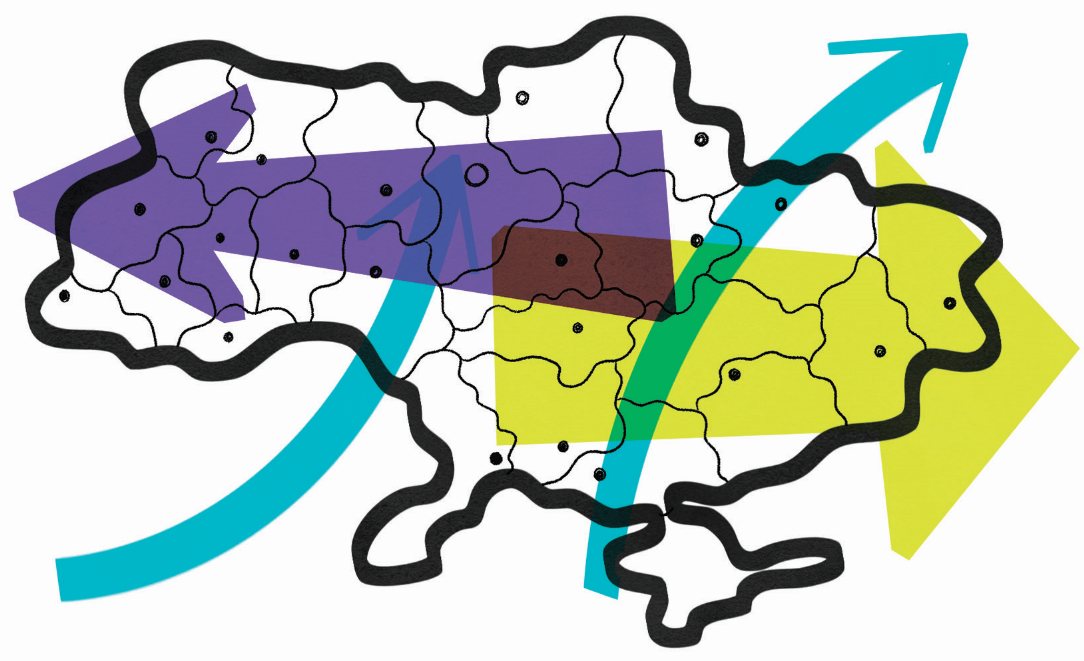In 2019, we evaluated the state statistics and the administrative data on international migration in Ukraine considering their compliance with Eurostat standards. According to the results of this evaluation, we have prepared the methodology guidelines.
Download the full text of the evaluation and guidelines (in Ukrainian).
The migration policy in Ukraine needs better data. The compliance of the statistics with the international standards, Eurostat standards, in particular, will be the first step to make the immigration data in Ukraine reflect real migration processes, be useful for the migration policy development, and be comparable across countries.

Whose functions are these – the State Statistics Service or the State Migration Service of Ukraine?
Compliance of the Ukrainian statistics with Eurostat standards is one of the areas of cooperation between Ukraine and the EU under the Association Agreement. Despite the efforts of the State Statistics Service (hereinafter – the SSS) to harmonize the state statistics with the European one, the international migration remains left out.
The problem is that most of Eurostat's international migration indicators are not considered "state statistics" under Ukrainian law. Therefore, they are not part of the SSS functions.
Most of the indicators are administrative data of the State Migration Service (hereinafter – the SMS), the State Border Guard Service, the Ministry of Foreign Affairs, and the Security Service of Ukraine. Given that the SMS is the authority responsible for making the migration policy and analyzing the migration situation in general, this issue should have been one of the targets of the SMS. The SMS, though, is neither obliged nor has methodological expertise to raise the issue of compliance of administrative data with Eurostat.
The new approaches to data collection in the field of migration are of particular relevance now considering the launch of the new subsystems of the Integrated Migration Management Information System (hereinafter – the IMMIS). Adoption of the electronic documentation and accounting of foreigners significantly simplifies the collection and processing of data and provides new ways for their analysis.
The consequences of non-compliance of data with international requirements
The non-compliance of Ukrainian migration statistics with international requirements creates many restraints for the migration processes’ analysis and policy-making. Here are some examples of what data is missing and what consequences it has.
Size, structure, and other demographic characteristics of immigrant stocks
There’s no information about the size and socio-demographic characteristics of immigrant stock (e.g., gender and age). In terms of migration status, the main demographic indicators of the population, such as birth rate, death rate, life expectancy, fertility, divorce rate, etc. are not collected. The only up-to-date information about the immigrants we have is the number of foreigners registered by the SMS. This information is not collected by age and gender, though. One of the consequences is that it’s impossible to take into account the role of immigrants when it comes to the evaluation of demographic processes.
Change of the reasons for residence for foreigners
The migrants in Ukraine may change their reasons for residence over time. However, the information about the migration trajectories of different migrant groups, including the transition between the reasons for residence, is not available in Ukraine. As a result, for instance, the path of a foreign student studying at Ukrainian universities is unknown.
Review of decisions on the granting of international protection
Currently, we have no information about how many first instance decisions on international protection are being reviewed and how many of them were reviewed in favor of the protection seeker. The lack of data makes it impossible to evaluate how effective, transparent, and fair the protection procedure in Ukraine is.
Some indicators of a single agency are only part of the overall statistic
Because of the identical functions of several agencies, there are no indicators of the total number of persons who acquired and lost their citizenship and the total number of irregular migrants at the national level.
Principles of data storage and dissemination
Particular attention is to be paid to the issue of data publication and dissemination. Eurostat publishes all migration data it receives from the Member States in the form of dataset. It publishes the methods of data collecting. Whereas in Ukraine, most of the migration statistics are collected in two or three-dimensional tables. Ukrainian agencies don’t publish the methods of data collecting and there are no explanations for changes in the methodology. Data is often not distributed in a machine-readable format.
Recommendations
To initiate cooperation between the SMS and the SSS in the field of statistics on international migration
The improvement of migration statistics, the harmonization of the Ukrainian system of accounting for international migration with the European one, in particular, depends on the creation of a favorable institutional environment and a clear division of functions between these authorities. It is not only the Association Agreement that drives change in data collection approaches. The cooperation of the SMS and the SSS should create conditions for rapid response to the international migration statistics needs arising from the analysis of the migration situation and the formulation of migration policy. It is necessary toregularly monitor the changes in the methods for collecting data on international migration and ongoing disputes at the international level, as well as incorporate new methods into the national data collection methodology.
To use information systems, such as the IMMIS, for statistical purposes
The use of information systems in the field of statistics should simplify the collection and processing of data and increase its capacity to work with them. The launch of all the subsystems of the IMMIS, the establishment of links between the unified state demographic register and other information systems will allow obtaining complete and reliable statistical information about the foreigners and stateless persons residing in Ukraine. To achieve this, it is necessary to introduce technical possibilities for obtaining depersonalized microdata from the IMMIS, in particular, the microdata integrated with data of other information systems. This will give an opportunity to respond more flexibly to statistics needs. Setting up the modes for accessing personalized microdata of the users will enhance the ways of data analysis.
To develop approaches to measuring the immigrants’ integration in Ukraine and assessing their contribution to socio-economic development
In order to fulfill the goals of the state migration policy in the field of migrants’ integration and to use immigration for socio-economic development the Ukrainian government needs data. The evaluation of the situation of migrants compared to the situation of the citizens of Ukraine based on the nationwide surveys is limited. Conducting the census would allow the government to obtain data on the number and the regional distribution of immigrants, and understand why there are so few households with a migrant background in the sample surveys.
Besides, in order to measure the integration and socio-economic contribution of migrants it is necessary to consider the use of the information systems, conduct special studies in cooperation between the public authorities and scientific institutions, and conduct targeted surveys of migrants.
To review the principles of data dissemination
It is necessary to regularly publish data in easy-to-analyze formats and to publish a list of all available indicators, as well as the methods for data collection. The publication of machine-readable files, including microdata, as well as the methods for their collection, would make international migration statistics much more accessible than it is now.
Download the full text of the evaluation and guidelines (in Ukrainian).
Support Cedos
During the war in Ukraine, we collect and analyse data on its impact on Ukrainian society, especially housing, education, social protection, and migration









